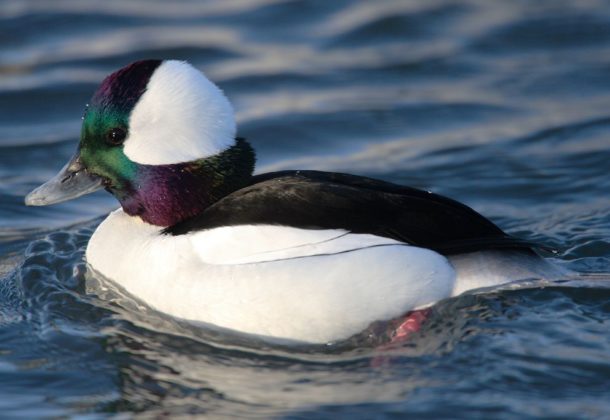Cap’n Jack IDs Birds Wintering in the Chesapeake

Message From the Cap’n is a compilation of fishing advice, waterman and weather insights, Chesapeake lore, and ordinary malarkey from the folks who keep their feet wet in the Potomac and St. Mary’s rivers.
Winter arrives in the Chesapeake!
From the Interpretive Buoy System: The lower Potomac water temperature was 46 degrees Fahrenheit and the salinity right at 17 parts per unit in mid-December as the Chesapeake Bay heads into its coldest time of year.
While winter sends some of the Chesapeake Bay wildlife to warmer climes, the bay remains active throughout the season with many different ducks and birds wintering in the Chesapeake.
Some of the ducks that visit the lower Potomac and its tributaries in the fall and winter include:
Buffleheads, locally called “dippers,” are usually the first ducks to arrive. They fly like they are in a playful mood.
Common Goldeneye, or “whistler,” is the smartest duck we try to hunt in Southern Maryland.
Ruddy, also known as “iron-head,” gets its local name because it is hard to kill.
Scaup, or “black-head,” is usually a visitor after the hunting season goes out. Scaups gather in massive flocks.
Common loon migrate through the Chesapeake Bay in the spring and are great fishers.
An interesting resident around the Chesapeake: Bald eagles are here year-round:
Bald eagles protect about a mile of shoreline or territory. They nest in the winter and have a varied diet. Here is a video of a bald eagle hunting a mallard for dinner.
The bald eagles are easier to spot in the fall and winter after the osprey have left to overwinter in South America. This seemingly influx of eagles is really simply because eagles and ospreys get along like the Hatfields and McCoys. The eagles tend to take a back stage during the ospreys’ nesting season in the Chesapeake. But once the osprey have left, bald eagles often perch in vacated osprey nests and have been known to take nesting material from those nests and use it in their own nests.
An interesting scenario in St. Mary’s County takes place on fields across from Third Base in Loveville, Maryland, where a deer processor spreads ground carcasses. Eagles are early risers and are the first to locate the feast. They’re followed by the buzzards who come later in the morning. Just the sound of the grinder alerts the eagles, sometimes drawing as many as 30 eagles feasting early in the morning.
Till next time, remember “It’s Our Bay, Let’s Pass It On.” Have a wonderful holiday season, Merry Christmas, and Happy New Year.
Reach Cap’n Jack at [email protected] or 240-434-1385
To learn about tours and trips into the Chesapeake, get more information on Fins + Claws’ Leader member page.























